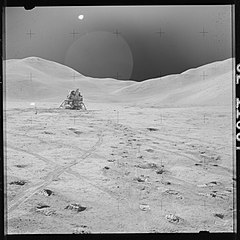


Gordon Alfred Swann (September 21, 1931 – 2013) was an American geologist. He received his PhD from the University of Colorado in 1962, and studied the Precambrian geology of the Front Range of Colorado. He is notable for his work with NASA and the training of the astronauts of the Apollo program in field geology.[1]
Swann served as the Principal Investigator of the Apollo Lunar Geologic Experiment for Apollo 14 and Apollo 15. A part of the Montes Apenninus (south of Mons Hadley) at the Apollo 15 landing site was informally called the Swann Range in his honor by the astronauts.
The asteroid 4082 Swann is named after him.[2]
References
[edit]- ^ Gordan Alfred Swann, USGS page on Swann, June 2014. Archived 2020-08-14 at the Wayback Machine
- ^ (4082) Swann = 1984 SW3, IAU Minor Planet Center
Well, that’s interesting to know that Psilotum nudum are known as whisk ferns. Psilotum nudum is the commoner species of the two. While the P. flaccidum is a rare species and is found in the tropical islands. Both the species are usually epiphytic in habit and grow upon tree ferns. These species may also be terrestrial and grow in humus or in the crevices of the rocks.
View the detailed Guide of Psilotum nudum: Detailed Study Of Psilotum Nudum (Whisk Fern), Classification, Anatomy, Reproduction